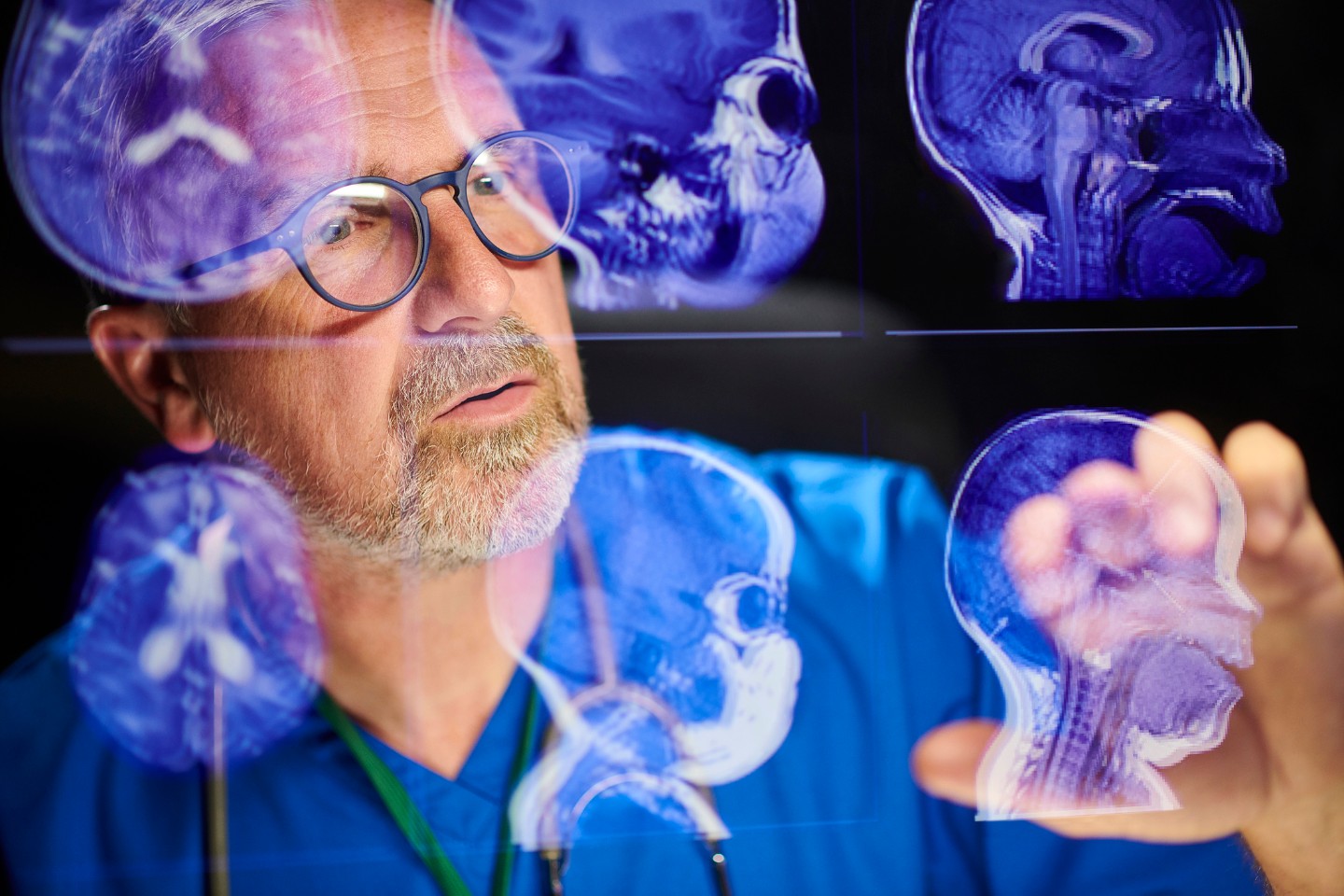Unmasking MS: More Common Than You Think, and Why We Fight So Hard
DEC 03, 2025MS is not rare. It’s estimated that nearly 1 million people in the United States and 2.8 million worldwide live with MS.
Read More
A challenging region for surgery has historically been the skull base, through which all the arteries and nerves of the brain enter and exit. The anatomy is complex and hard to reach with traditional surgical tools, and the large incisions required meant patients could have painful and prolonged recoveries.
Now, a minimally invasive approach called endoscopic endonasal neurosurgery (EENS or EEA) makes it possible to more easily treat various conditions within the nasal cavity and skull base with much, much smaller or even no incisions.
EENS involves a neurosurgeon and an otolaryngologist (ENT) together using an endoscope, a thin tube with a camera on the end, to go through the nose to visualize and operate on a surgical site with specialized micro-surgical instruments.
Today, EENS offers patients a less invasive and more effective treatment option for a variety of conditions, including:
EENS has gone from a rare and unusual procedure in the early 2000s, to nearly the standard of care at tertiary medical centers such as CHI Health Creighton University Medical Center-Bergan Mercy. Like all surgery, EENS has specific risks and benefits, and is not appropriate for all diagnoses or patients. In properly selected patients, EENS is a safe and effective procedure. In fact, I published one of the largest studies looking at the safety of EENS in over 1,000 patients in 2021 in the Journal of Neurosurgery (https://doi.org/10.3171/2020.11.JNS202494).
However, some diagnoses are still best treated with traditional open craniotomy surgery. There are pros and cons to each treatment, and this is why the board-certified, fellowship-trained CHI Health skull base team is experienced in all types of surgery: the goal is to choose the right surgery for each individual patient to have the best outcome possible.
Like all surgical procedures, bleeding and infection are risks after surgery. Nevertheless, the risk of infection is quite low despite the surgical corridor going through the nasal passageways. Patients very rarely experience any bruising on the face or under the eyes. Because of the inflammation that the surgery causes in the nostrils, patients may have a decreased sensation of smell for several weeks or even months afterwards. This usually resolves on its own, and permanent loss of smell after EENS is usually only seen in types of cancer treatment where removal of the smell nerves is required to obtain negative margins.
In studies looking at patient quality of life, many patients actually breathe better through their nostrils long-term after EENS (1 or more years) than they did before. Patients with sleep apnea (OSA) who use a CPAP or BiPAP machine will need to discuss this with their surgeons to assess how long they will need to hold off on using such devices.
Surgery is constantly progressing and EENS is no exception, even though it is a relative newcomer to the field of neurosurgery. Higher-resolution endoscope cameras, now in 4K, provide amazing clarity even compared to images obtained five years prior. Specialized micro-instruments continue to develop to reach deep tumors and other diseases while minimizing trauma to normal tissue. Intraoperative visualization of tumors continues to improve with technology like intraoperative endonasal ultrasound and tumor fluorescence imaging.
If you have further questions or interest in EENS, reach out to our neurosurgery department.
Sources:
2021 Journal of Neurosurgery (https://doi.org/10.3171/2020.11.JNS202494)

MS is not rare. It’s estimated that nearly 1 million people in the United States and 2.8 million worldwide live with MS.
Read More
While we can't always pinpoint an exact cause for every aneurysm, we've identified several key risk factors that can increase the likelihood of developing one, and more importantly, the risk of it rupturing.
Read More
Alzheimer's is a progressive brain disease that slowly destroys memory and thinking skills, and eventually, the ability to carry out the simplest tasks.
Read MoreWhen you need local health information from a trusted source, turn to the CHI Health Better You eNewsletter.